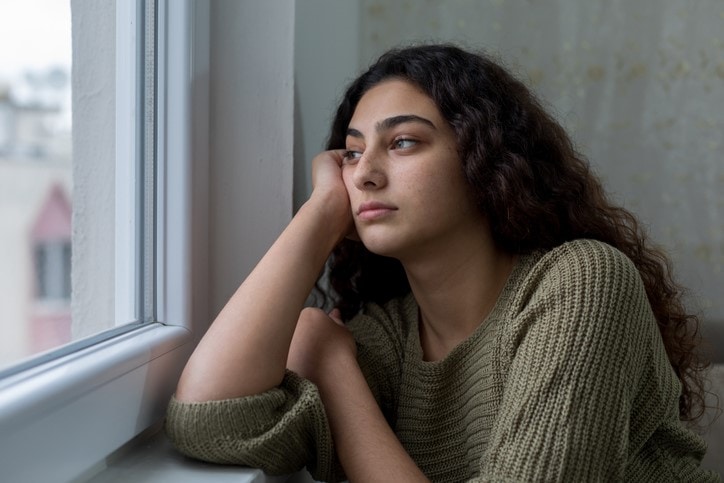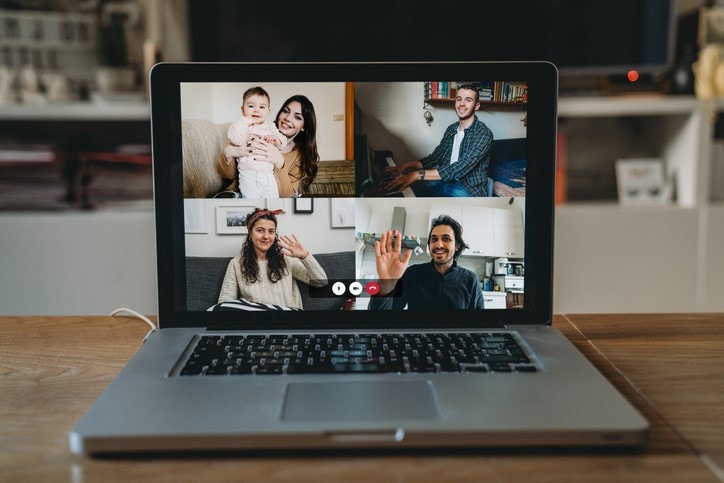/ News Posts / Music—Thinking Differently: It’s Not ALL about the Virtual Ensembles
Music—Thinking Differently
It’s Not ALL about the Virtual Ensembles
By NAfME Member Meghan Cabral
This time of social distancing is difficult for all involved. It is difficult for students as they are missing school, missing proms, missing concerts. It is difficult for teachers as they are missing their students, missing their colleagues, missing making music. Music education is just as important now as it was before, and I would submit that it may be more important now than it was EVER before.
As this time is passing, music educators are filling their days NOT with music-making in the same sense of the words as we did back in February or every other day prior to mid-March. We are instead filling our days with Zoom calls, conference calls, and listening to webinars to be able to make sense out of this new “time.” A recent webinar reminded me of the importance of music and the social-emotional connection that we make with our students. Our discipline is a social-emotional subject area; we tap into emotions during every minute of our day.
When we began distance-learning, and my department and I began to discuss the types of activities in which we wanted our students to participate, I will be honest: I was not inspired at the moment to do big performances. I myself felt depressed about not being at work. I felt uninspired, and I wanted to give my students a way to express themselves musically in any way they could—instrument, no instrument, inspired to play, not inspired to play. So, as a department, we began talking about things that all the students could do and be inspired by.
For our high school students, we started with listening lessons and decided that all our ensemble students—band, choral, general music—would do the same assignment. The middle school staff followed the same idea. Why shouldn’t we capitalize on this time to expose all of our students to great musical works? We created surveys and listening lessons for “West Side Story,” “Blue Shades,” “Sing, Sing, Sing,” Vivaldi’s “Gloria,” “Rite of Spring,” and participated in #leanonus. What better time than NOW.
During normal times do I have my students complete listening lessons—sure, of course. I am trying constantly to expose my students to different music, but . . . do I expose them to choral literature, jazz literature, or Broadway on a normal basis? Students not only listened to the works, but also read background about them, investigated the composers, investigated the meaning of the pieces.
Students had the opportunity to be completely honest in their opinions of these musical works. When asked what the most interesting fact to them was regarding the “Rite of Spring,” they responded with ideas like:
- The most interesting fact about the “Rite of Spring” is that it caused mass hysteria in the audience. So much chaos happened that the dancers and players could not even stay in tune with each other.
- The fact that Stravinksy had a bassoon play such a high range, having such a prominent role, as well as the reaction of the overall performance
- Being a dancer myself, hearing that Nijinsky was so harsh to his dancers, making them do physically unnatural things for the sake of the performance was very interesting.
- Imagine being the conductor who was told to “keep going” no matter what, while a loud angry mob was forming in the audience.
Students were able to draw connections between their own experiences or were able to imagine different perspectives. What better learning!!
As many of you might have seen, I recently presented a webinar for NAfME on this same topic which might be a little controversial. As I was scrolling through Facebook posts, groups, and comments, one particular post really struck me. A teacher was reaching out because her administration wanted a virtual ensemble. As a chorus teacher she was very concerned about creating this virtual ensemble as she did not believe her middle school students would want to sing along. Additionally, and rightfully so, she was very concerned about the hours creating a virtual ensemble would take. These amazing ensembles that we all see online can take the non-techy music teacher, not a few hours, but 30-40+ hours and days upon end to create. As you will see in the webinar if you view it, these virtual ensembles cannot be done in real time. They do not replace our ensembles. They will create an ensemble-like or concert-like performance, but they are not real-time performances.
We, as music educators, need to be thinking ahead—thinking toward September when things will most likely look different still. What types of activities or lessons are available to use in our classrooms that give students a musical experience, but also reach all stakeholders’ social-emotional well-being? It is okay to give ourselves permission, even in performance-based classes, to come up with a hybrid of performing along with learning and experiencing music in other ways.
We can all figure out ways to get our students performing still. We can use SmartMusic® and MusicFirst. We can use Google Voice call-ins. We can have students submit playing exams, or scales. If we are 100% virtual, we can have students working in small chamber ensembles instead of large groups.
But what other resources can you explore to incorporate other options in your classroom? In addition to the listening lessons described above, here are some additional resources at your disposal to create other learning experiences—some possibly non-playing musical experiences. It is okay to give students choices when picking assignments or activities as a way for them to express themselves as well. So many of these ideas are ones I have borrowed from other music teachers. There are so many options available to incorporate different activities into your ensemble classroom.
Choice Ideas:
- Pick your favorite piece and record it—ANY piece
- You are the teacher—record yourself teaching a music concept. Examples:
- How to put your instrument together
- How to count quarter notes
- Research your instrument and give a short history presentation on it.
- Pick two pieces of music, one band piece and one piece of your choice. Listen to the piece, and write down single words describing what you are thinking, feeling, and experiencing, and then create a word cloud.
- Meet the composers: Check out some of these composers, and find one in which you are interested. Write a summary on the composer, and submit a piece you’d like to play in the future by that same composer.
- Play music under Brian Balmages!
- Watch a Khan video about your instrument or about your voice and learn with the video.
- Chrome Music Lab
- Create your own concert program. Look for four contrasting pieces.
- March
- Lyrical (slow piece)
- Fast/Fun Piece but not a pop piece
- Pop Song
- Creating Flipped classroom videos—check out these resources
Don’t forget to also check out the fantastic webinars NAfME currently offers. NAfME archives them as well in case you cannot watch live.
Please take a minute to follow me on Twitter (@band_mcabral) and Instagram (@band_cabral) to see additional ideas and resources.
About the author:
 NAfME member Meghan Cabral teaches middle school band in Carmel, New York. Meghan is a GRAMMY-nominated Music Educator Award™ quarterfinalist for 2017. She has written for many music publications including The Instrumentalist, NAfME’s Teaching Music, Music Educators Journal, NYSBDA’s Band Stand, as well as NYSSMA’s School Music News. Meghan is an active guest conductor as well as clinician for music departments and at state conferences. You can follow Meghan by visiting her website. Meghan’s new publication, “A New Band Approach,” was just released that includes flipped classroom videos starting on Day 1 of Beginning Band as well as more advanced flipped classroom videos on enharmonics, whole vs. half steps, circle of 5ths and more.
NAfME member Meghan Cabral teaches middle school band in Carmel, New York. Meghan is a GRAMMY-nominated Music Educator Award™ quarterfinalist for 2017. She has written for many music publications including The Instrumentalist, NAfME’s Teaching Music, Music Educators Journal, NYSBDA’s Band Stand, as well as NYSSMA’s School Music News. Meghan is an active guest conductor as well as clinician for music departments and at state conferences. You can follow Meghan by visiting her website. Meghan’s new publication, “A New Band Approach,” was just released that includes flipped classroom videos starting on Day 1 of Beginning Band as well as more advanced flipped classroom videos on enharmonics, whole vs. half steps, circle of 5ths and more.
Are you a NAfME member who would like to blog for us? See the blog guidelines and email marketing@nafme.org. Interested in reprinting this article? Please review the reprint guidelines.
The National Association for Music Education (NAfME) provides a number of forums for the sharing of information and opinion, including blogs and postings on our website, articles and columns in our magazines and journals, and postings to our Amplify member portal. Unless specifically noted, the views expressed in these media do not necessarily represent the policy or views of the Association, its officers, or its employees.
Published Date
May 25, 2020
Category
- Ensembles
- Innovation
- Technology
Copyright
May 25, 2020. © National Association for Music Education (NAfME.org)







